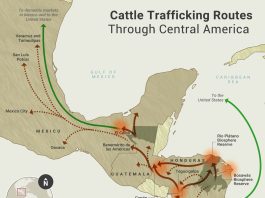
I reckon one of the problems with getting older is not all about being unable to do all of the things that we once took for granted. It is the thought that if we are not careful we will spend more time looking back rather than looking ahead. But even knowing this it can be a place to go when things are just too confusing and we can’t get our mind around some of what is going on around us. With that thought in mind I would like to share some of what was once our life.

Every man is entitled to one good shotgun and one real good hound in his life. This is according to Homer Kent, who was one of my Daddy’s best friends. The shotgun I’m not too sure about because over his lifetime Daddy must have owned several dozen. The dog I am sure about, he was a black and tan and white colored Walker hound whose only shortcoming was that he was 1/8 Trig. Why this was a bad thing I was never sure. I was not even sure what a Trig was at the time, but according to some of the folks who wanted to breed to this hound this fact made him an unqualified candidate for their gyps. This hound was the fox dog that every hunter dreamed of owning, his name was Little Doc Ellis, but was known as Doc.
For one to understand the importance of this dog in the lives of my Daddy and his cohorts of the foxhunting fraternity we must digress and learn a little about how all of this worked. The fox hunting of the Southern U. S. that was part of my growing up and, that for less of a more reliable description, a way of life for the participants bears no resemblance to the classic well documented hunts of England and the landed gentry of the aristocratic Old South. Horses were seldom ridden, there was not a red coat in sight and most of the refreshments were eaten from a can or brown paper sack. This was blue overalls and jumpers, brogan shoes, work boots and caps and hats, chewing tobacco, Copenhagen snuff, roll your own Prince Albert in a can. The refreshments consisted of coffee from an old beat-up thermos bottle, bologna and mayonnaise sandwiches, sardines and crackers and onions eaten on the hood of a pick-up truck. This was hard scrabble, basic, low-cost sport enjoyed by the working and farming folk who believed that a clear, crisp fall night with 12 or 15 hounds running a big, gray fox for 4 or 5 hours was about as close to perfection as they would ever attain.

This was not hunting in the sense that the goal was to put meat in the pot or a trophy on the wall. This was a contest between the fox and the hounds and the communion between the men and boys and the hounds and the fox. Communion is not too strong a word to describe the connection. Communion is the communing, a sharing of one’s thoughts and emotions. Take my word for it there were plenty of thoughts and emotions shared on these hunts. For a hunter to look and see one of his hounds coming out of the race before it was over or called off was the hardest of insults to bear. It was accepted that some hounds would never be front runners, but to be a quitter was intolerable.
These folks loved their hounds and held the fox in high regard, the fox was not looked on as prey, but this animal was well respected and thought of as a worthy adversary. If a fox proved to be a real competitor it was not at all uncommon for the hunters to not run it for a week or two to allow it to rest and recuperate before challenging it again. To say that these folks were noble and enlighten sportsmen would not be even close, these were folks who enjoyed a good fox chase and realized without a good running fox this would be impossible. The welfare of the fox was for selfish reasons on the hunter’s part, but nevertheless the fox benefited.
Here’s more from Kathy….
I was so interested in Don’s story and the idea of fox hunting that I went on to read more. Here’s what I learned: Fox hunting is much different than it was in Don’s Daddy’s day. When timber companies closed their lands to free public hunting, hunters turned to leasing large, fenced-off tracts, called pens. In 2014, the legislature declared this pen hunting a part of Lousiana’s culture. In this kind of hunting foxes are not killed, but are chased until they “go to ground” in a den or hole.
Moses Poole, a retired Catahoula Parish forestry worker and long-time fox hunter, loves the music of the hunt “You’ve got to know your dog’s mouth. Some dogs’ mouths blend in with the pack and are indistinguishable. That’s all right; they just help to make the music. But what I like and breed for is a big, heavy mouth. I want him to stay on the front end, with a burning desire for pursuit.” The music of the hunt has even inspired musicians. Here, fox hunters enjoy some time together, playing “Tennessee Mountain Fox Chase.” One fellow even adds the music of the dogs to the piece.
Enjoy!



